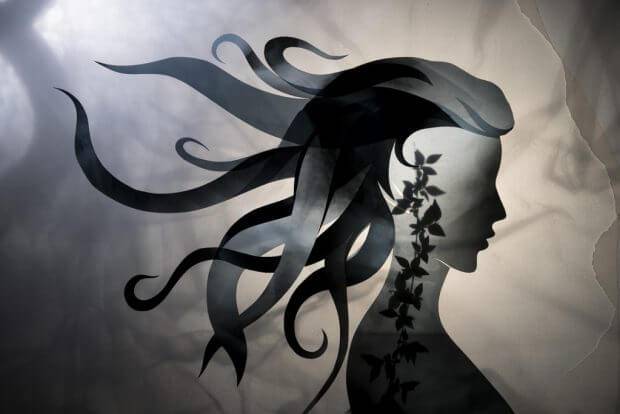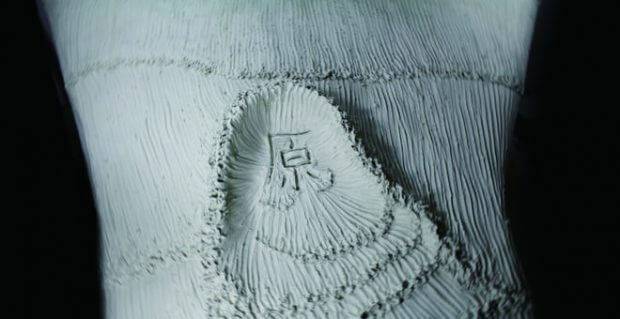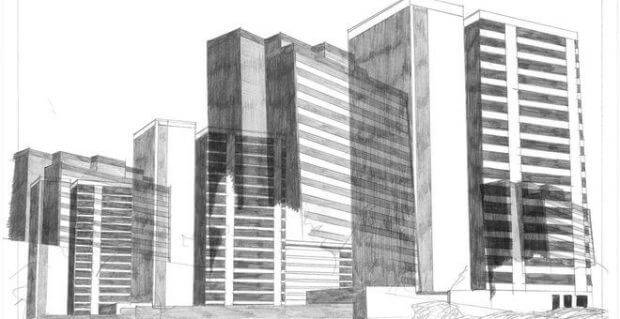Annecy 2016: Short Films In Competition 6 – ‘Off-Limits’
On first viewing of the Annecy International Animated Film Festival‘s sixth (of six) short film competition screening ‘Off-Limits’, I left with a vague impression that the selection largely suffered from ‘Naked Emperor’ syndrome; the inevitable cluster of films whose artistic value is clear as day in directorial statements and programme synopses, though strangely absent in the watching of the films themselves. Yet of all the events from last week’s festivities, in my head this is the one I’ve returned to the most, each time seeing a new layer of clothing wrap itself around the strutting Emperor until, at this point, he actually looks rather swish. As with all forms of art, some of the films we encounter on our Skwigly travels are lacking in superficial value or instant gratification, yet prove to be rich in substance once they have grown on you. In this respect I’m glad to have taken the extra time before writing up the selection. While the films presented here are far from flawless, they scratch a certain itch that by-the-numbers animation might not, necessarily.
This brings to mind another discussion point of the ‘Off-Limits’ category, that of how animation is even defined – to many, a first impulse would be to generalise this selection as ‘experimental film’, with the animated elements oftentimes sparse. Since taking over as the Annecy Festival’s Artistic Director, Marcel Jean has endeavoured to broaden the spectrum of filmmakers the event might accommodate. Over time the ‘Off-Limits’ strand, in which more avant-garde and experimental work is showcased, was promoted to a new competitive section, as Marcel explained to Skwigly in 2013:
I think that for some, it’s not a good idea to put radical experimental films in the middle of an animation competition programme to an audience that is not ready to receive that kind of experiment. I want to give these films a better place to be appreciated, and so a separate competition section is a good way to give the filmmakers a place at the festival, with an opportunity on the part of the viewers who are looking for edgy, experimental stuff to find what they’re looking for.
Another factor of the changing landscape of animation that Marcel Jean posits as worth considering is festival inclusivity, as the border between filmmaking genres has blurred significantly over the years.
Our view and the way we think about what animation is changes constantly; animation is no longer what we thought it was forty years ago. What do you do with films that are entirely shot on green screen and composited, where there are live actors but set against CGI and special effects? Is it animation? We have to consider that and take risks with that.
Certainly risks have been taken in this year’s edition, but with them a great deal of food for thought.
Summer
Belgium/France – Ronny Trocker
The programme kicks off with a powerful, yet slow-paced entry, not so much stretching the definition of animation as inverting it; Summer (Estate) is a masterful study of the inanimate, in which a man finds himself washed onto a beach surrounded by eerily still onlookers frozen in place. “Freely inspired by a photo taken by Juan Medina”, the use of rather complex post-production processes to create a seemingly simple visual – people sitting/standing still – gives the film an appealing, nightmare-in-broad-daylight quality.
If You Say Something, See Something
USA – Gina Kamentsky
One of two appearances by scratch-on-film artist Gina Kamentsky, straddling the line between the pure freeform abstraction of Steven Woloshen and the more disciplined approach of Ross Hogg‘s dabblings in the medium. While it bears the usual, unavoidable echoes of McLaren’s work, its brevity and incorporation of rudimentary character animation makes it an amusing watch.

Yalda
France – Roshanak Roshan
Though at times reminiscent of the overfamiliar sanctimony of a Jack Chick tract, Roshan’s cut-out puppetry film boasts some instances of impressive composition and atmosphere. The on-the-nose, Li’l Markie-esque duologue between would-be-mother and her would-be-aborted foetus would have benefited from some abridgement, indulging as it does a melodramatic, at times narcissistic decrying of the world the child would be born into. Alternative title suggestion: Panning Left.
Self
Austria – Claudia Larcher
Alternate title suggestion: Panning Right, although this film shares little else in common with the one that precedes it. In this case Claudia Larcher rather cleverly manipulates our presumption of what we think we might be seeing; at first it seems to be live-action, though as it progresses we appear to be observing an assortment of fleshy impossibilities via photoreal CGI. Though the director’s statement regarding the film – that “self-perception and the others’ awareness of oneself are examined against a backdrop of identity, gender and perfection” – is something of a necessary evil in this industry, the film succeeds enough on the merits of its visual precision.
4min15 in the Developer
Canada – Moïa Jobin-Paré
The opening sequence of Moïa Jobin-Paré’s film comes across as deceptively amateurish, with muddied composition. A minute or so into it, however, and a certain textural brilliance begins to shine through, one that builds upon itself until we wind up with a film that proves rich in atmosphere and artistic sophistication (4min15 in the Developer picked up the main award for the ‘Off-Limits’ category).
Last Door South
Belgium/France – Sacha Feiner
Perhaps the most narratively accessible of this batch, Last Door South makes bold use of well-designed, live-action puppetry, though the quality of the characters’ performances is somewhat inconsistent. In its subdued moments there is a lot of subtlety that lends itself well to the gothic, noir atmosphere, though in the more dramatic sequences the puppets have a bit of a tendency to just, well, flail about. The film doesn’t pay homage to David Lynch’s Eraserhead so much as directly lift certain key visuals from it, although the story itself is a specific adaptation of a Philippe Foerster graphic novel. Any ambiguities as to how the film was made are dissolved by the unusual decision (completely at odds with the film’s overall tone) to incorporate making-of footage into the credits sequence, and its clear that animation has taken a back seat in much the same manner as last year’s darling of the festival circuit MANOMAN. You can learn more about the making of the film from director Sacha Feiner in our recent podcast minisode.
The Great Escape
Singapore – Tan Wei Keong
A simple message, plainly told: If there are little naked kids growing in your olive jar, it’s probably time to throw it out. Adapted from the Alfian Sa’at poem of the same name, Keong’s assortment of quirky visual concepts and animation approaches are fun to look at, though any inherent symbolism winds up a bit lost in the mix, unfortunately.

Suijungenten (Datum Point)
Japan – Ryo Orikasa
Waves, ripples and briefly glimpsed messages are raked into an undulating clay ocean in Ryo Orikasa’s piece that brings to mind Will Vinton’s propensity toward animated metamorphoses. While a calming, strangely satisfying watch, the artistic decision to pair it with a soundscape designed to either induce tinnitus (or coerce a confession out of sheer torture) proves something of a mis-step.

Ginny
Austria – Susi Jirkuff
While there’s a certain degree of competence to the quality of the illustrations on display, Ginny uses its single, somewhat irritating device of jump-cutting from image to image in time with its soundtrack as too much of a crutch. The larger issue is that of the stilted performances of the unseen characters, where a child and adult discuss an incident that went awry on a council estate in a manner presumably intended to come across as found sound. To English ears, however, the sheer degree of affectation and cloying attempts to capture the vernacular of underprivileged youth clouds the film’s message.
Tracheal Shave
USA – Gina Kamentsky
Another fun and brief piece from Gina Kamentsky, again indulging a unique approach to character animation in what one would have to presume is not an accommodating environment for it. While it shares a lot of identifiable similarities with If You Say Something, See Something, the scattershot, Revolution 9-esque soundscape and variety of visual ideas adds a little bit more meat to the film.
The Reflection of Power
France/Romania – Mihai Grecu
Putting this film at the end of an already-challenging screening was a bold move, as it’s usually at this point in proceedings that the collective patience of the audiences starts to wear thin. Whether or not the gambit paid off, The Reflection of Power took home the Jury Distinction and, in spite of its aggressively belabored pacing, becomes a uniquely captivating affair. As with the opening film Summer, the hypnotic atmosphere of the film is owed largely to a series of well-composed tableaux, with archival footage interjecting on occasion. We see Pyonyang in alternate states of raucous celebration and quiet despair as the city gradually floods; have its citizens fled? Are they too busy indoors, distracted by the ephemera of a grand, choreographed ceremony? Is any of this remotely animated? Whatever one concludes, there’s an undeniable mastery to Mihai Grecu’s piece.
With Annecy now over be sure to keep checking back with Skwigly for continued festival coverage. Keep up to date with us on Facebook, Twitter and now Instagram.


